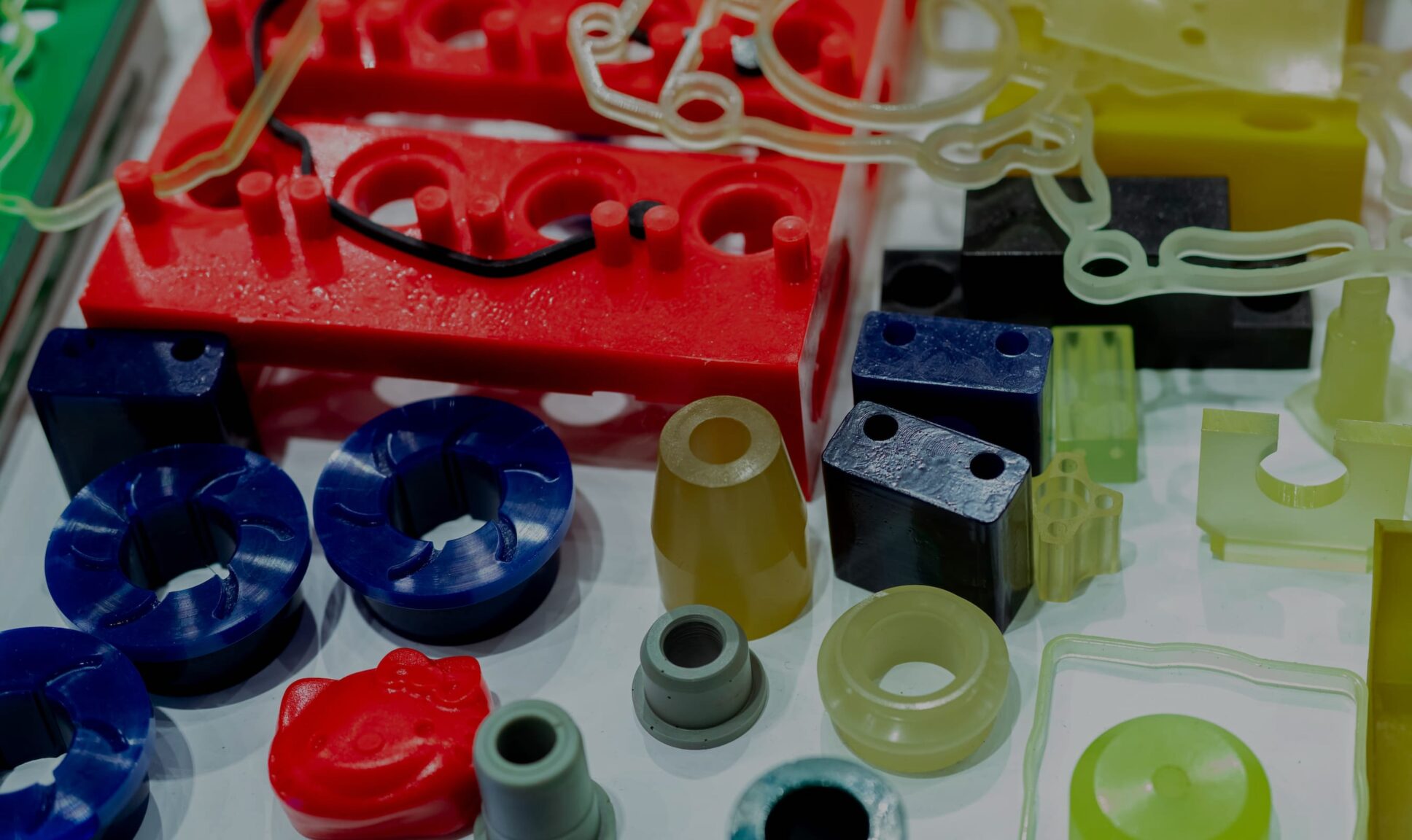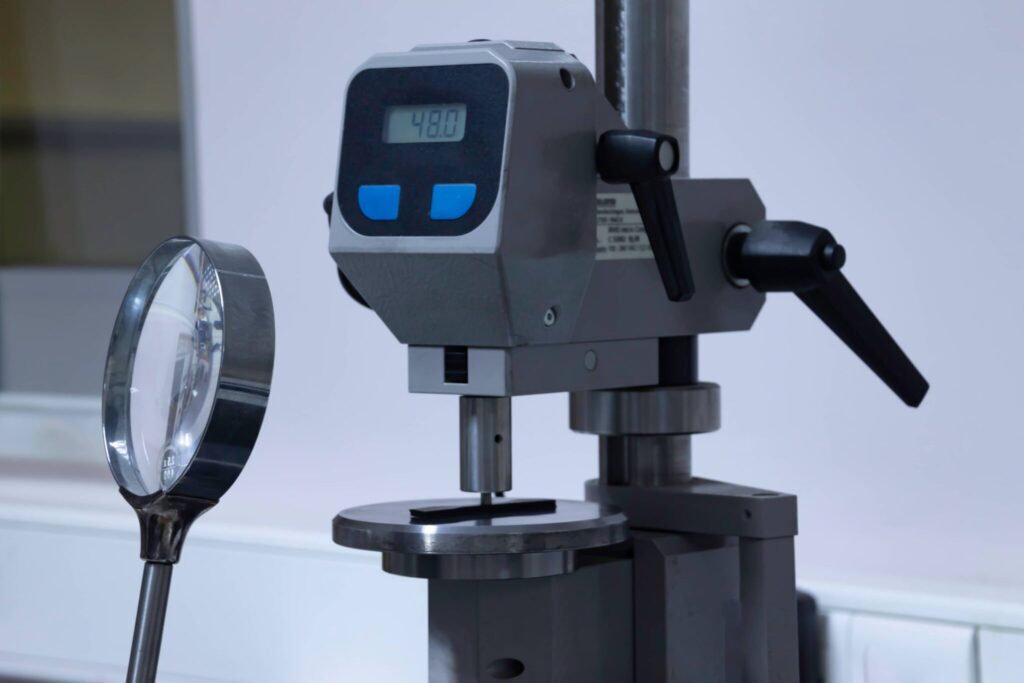

During the beginning stages of any project, engineers and product teams should take the time to understand the mechanical specifications of each prospective material. This includes not only the physical, chemical, and mechanical properties that can be found in any data sheet, but also other factors such as how well the material performs under certain environmental conditions or how durable it is. Considering these and other factors helps product teams create a superior product while optimizing time- and cost-efficiency.
One of the most important factors to consider when manufacturing with plastic is durometer or shore durometer, which speaks to the hardness of a given material. Here’s everything engineers and product teams should know about this important measurement:
Durometer is a standardized way of measuring the hardness of materials like rubber or plastic. Hardness is a measure of how resistant a plastic is to deformation caused by mechanical indentation or abrasion.
Engineers can test a material’s hardness using a durometer tester. The apparatus looks like a round tire pressure gauge and has a needle on a calibrated spring extending from one end. To test for durometer hardness, an engineer places the needle against the elastomer or plastic and applies pressure. Once the needle has penetrated the material as much as it can, the measurement needle indicates the corresponding durometer hardness on the appropriate scale.
Although durometer can be measured on a scale of zero to 100, it’s not a unit of measurement. It’s actually a dimensionless measurement, meaning durometer numbers measure how hard or soft a material is relative to other materials that have been measured using the same durometer scale. Lower numbers indicate softer plastics, while higher numbers indicate harder plastics. For example, 90A polyurethane tubing is harder than 70A polyurethane tubing.


Different shore hardness scales were invented so that engineers and product teams could discuss the hardness of materials using a consistent, universal, and reproducible reference. The three most common shore hardness scales are shore 00, shore A, and shore D. Shore 00 is only used to measure the hardness of extremely soft rubbers and gels, shore A measures flexible rubbers that can range from very soft to hard, and shore D is only used to measure hard rubbers and plastics.
Product teams should know that durometer hardness doesn’t directly correlate to the flexibility of the end part. Rather, it’s an indirect measure of stiffness that teams can use to better understand the general feel of a material at a glance. Product teams should also know that they cannot compare materials that lie on different shore hardness scales. Durometer numbers are relative to the materials on their specific scale, meaning there’s no direct relationship between hardness on one durometer scale and hardness on another.
For example, a material with a durometer hardness of around 80 on a shore 00 scale is about as hard as a pencil eraser, but a material with a measurement of 80 on the shore D durometer scale has the hardness of a hard hat. Clearly, these measurements aren’t equivalent, although they share the same number, so product teams must remember to only compare the hardness of materials on the same scale.
When evaluating elastomers or plastics, engineers and product teams should think about their product’s end-use application and the project requirements. These factors will help narrow down the pool of potential materials and give product teams a clue as to what shore durometer scale they should focus on. If the part must be able to support a lot of weight over an extended period of time, for instance, teams should bypass the shore 00 scale altogether and only consider materials between the 70 and 100 range on the shore A hardness scale and/or the entire range of the shore D hardness scale.
Engineers should also balance desired hardness with other considerations like cost to determine which trade-offs they’re willing to make. For example, harder metals can be more expensive or difficult to machine. To work around this, engineers can use post-process hardening treatments to achieve higher durometers while maintaining ease of machining.
Still, material hardness is not the only factor that matters, and hardness is not necessarily indicative of other properties like strength or corrosion resistance. Stiffness and compression modulus measurements will give a more accurate reading on the sealing performance of a certain rubber than its durometer hardness.
To do their due diligence and select the best material for their specific requirements, product teams should evaluate options against a range of mechanical properties, including density, compression force deflection, application force, and thickness, in addition to durometer hardness.
The hardness of materials is especially important to consider when working with molds. Engineers must choose a mold rubber that will allow them to easily extract the original model and any subsequent castings from the mold once it has been cured — and shore hardness will have a direct impact on that.
For example, it wouldn’t be wise to use a 70A durometer elastomer to make a mold for a part with thin segments that stick out at different angles. A 70A durometer rubber is as hard as a car tire and doesn’t offer the flexibility necessary to extract such a delicate part without breaking it. An elastomer with a 30A shore durometer or lower would likely be flexible enough for this application.
It’s also important for product teams to consider materials’ hardness when using additive manufacturing technologies. Many product teams aren’t as familiar with additive manufacturing materials, but if you know the durometer of an additive material, you can compare it to the durometer of more traditional plastics used in injection molding. This will give you a general idea of how the additive material will perform and provides a frame of reference.
Note that some additive materials have two durometers — an instant durometer and a five-second durometer. For example, a part produced using the Carbon Digital Light Synthesis (DLS)™ process likely won’t perform as expected until after it has been cured. Product teams using at-home printers or manufacturing in-house will notice a difference, but if you work with a manufacturing partner, you don’t need to worry about a material’s instant durometer because you’ll only see the final product. Still, it’s good to know that some materials require additional curing and post-processing to achieve their final durometer, so initial measurements are subject to change.
To sum it up, durometer is a dimensionless but standardized measurement used to indicate the hardness of an elastomer or plastic relative to other elastomers or plastics on the same scale. Materials with higher durometers are harder, but teams should be careful not to compare materials across different scales because there’s no direct relationship between a given number on one scale and the same number on another.
Engineers and product teams should consider durometer during material selection, especially if their applications have specific hardness or softness requirements. However, evaluating shore hardness alone is insufficient. Teams should carefully consider all relevant design and performance requirements in order to select the best-fit material or materials. A seasoned manufacturing partner can simplify material selection and streamline the entire product development process.
At SyBridge, we specialize in helping product teams ensure their final products meet their needs. We know how crucial material selection is, and partnering with us means gaining access to our collective years of manufacturing, engineering, and supply chain expertise. By working with an experienced manufacturing partner like SyBridge, product teams can make the material selection process simple and stress-free, while accelerating project timelines and keeping costs low. Contact us today to get started.
Forget typical cycle times. We're pushing the boundaries of conformal cooling. While traditional approaches deliver…
Forget typical cycle times. We're pushing the boundaries of conformal cooling. While traditional approaches deliver…
From left to right: Brayden Janak (apprentice); Logan Vifaquain (CNC machining, Programming and CMM); Ron…
SyBridge Technologies is proud to announce we have been awarded the 2023 General Motors Supplier…
Today, designers and engineers are accustomed to working with digital tools in their day-to-day jobs.…
Optimizing Your Injection Molding Process for Cost-Effective Manufacturing Excellence In today’s competitive landscape, manufacturers are…